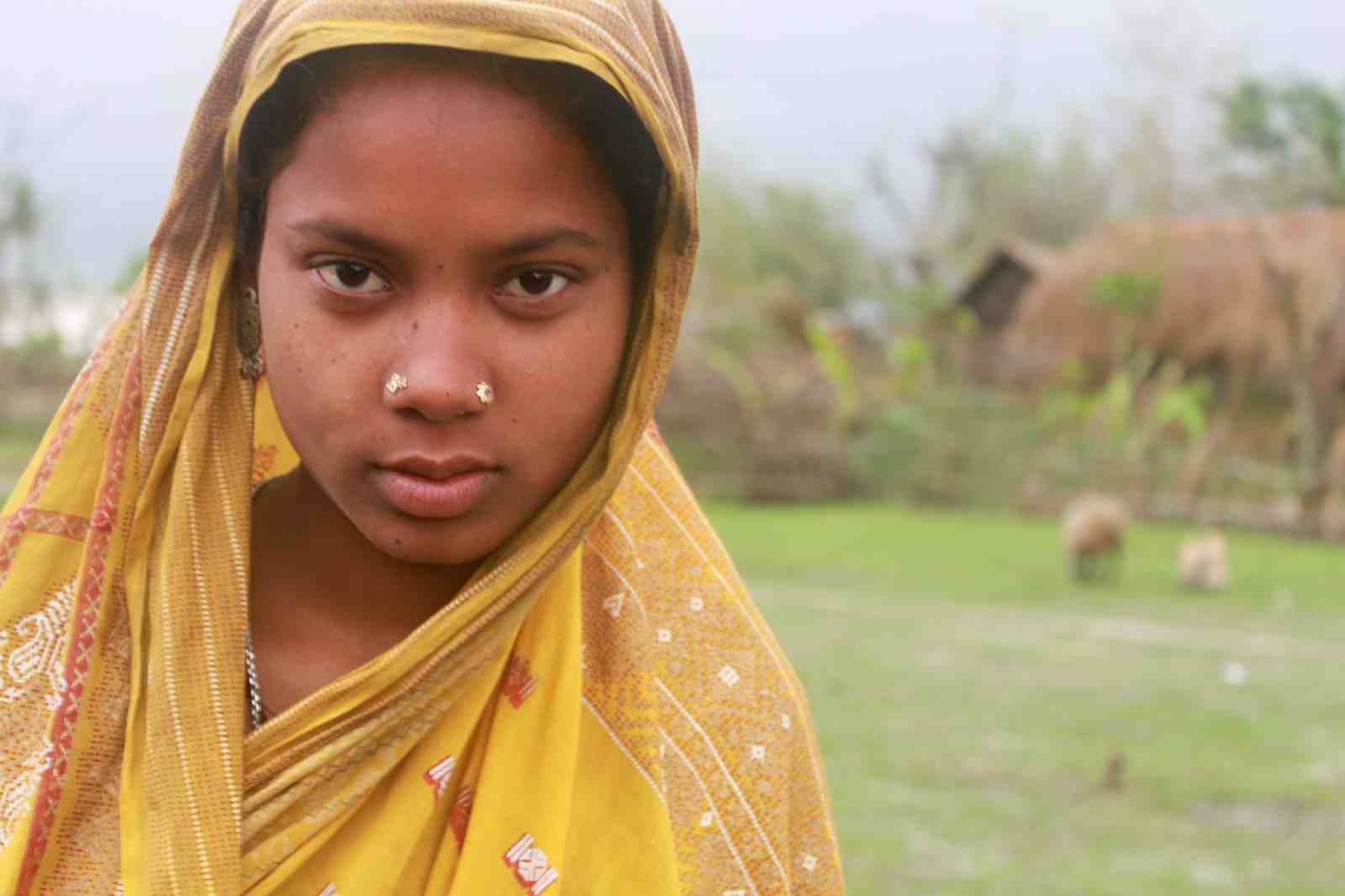I had written about child marriage before. When I went to Ethiopia, I visited a program for girls who had fled early marriage in their villages and ended up in the capital Addis Ababa. I met a classroom full of such young girls. With their schoolbooks in hand, they looked like kids, not brides. I talked to some of the girls in depth about how their desire to continue their schooling had pushed them to leave their families and traditions behind and flee to what they hoped would be a better life. These girls had dreams, and the courage to pursue them.
This time, in a small village on a remote island on the Brahmaputra River in northeastern India, the story was still on child marriage, but everything was different.
This time, the girl, Hasina Khatun, did not want to continue her education. She had not been to school a day in her life. Hasina was 13 when her aunt had told her she would get married. Like the girls I met in Ethiopia, Hasina did not want to leave her family behind and start a new life with a husband. But unlike the others, she accepted her life. When I asked if she had goals or dreams, she couldn't think of any.
Unlike the girls in Addis, Hasina hadn't fled. Whether in Ethiopia or India, girls who have a baby under the age of 15 are five times more likely to die in pregnancy or childbirth as women in their 20s, according to the UN Population Fund. Girls 15 to 19 are twice as likely to die.
Wherever the girl lives, child marriage increases the likelihood of domestic violence. It generally lowers the age of a first birth and ends a girl's opportunity to get an education, thereby decreasing her chances of employment and earning potential. Sent away from her family and village, the girl is likely to loose her support network and face social isolation.
In Ethiopia, this information served as a backdrop for what the girls I met had escaped. In India, as I chatted with Hasina inside a bamboo shack on the island, her life felt like a checklist.
Domestic violence? Three days after getting married, her 19-year-old husband told her they would have sex. She said no. He forced himself on her. Check.
Low age of first birth? She's now 15 and five months pregnant. Check.
Education? She works in her in-laws home, helping cook and clean. She lives on an island with no secondary schools and couldn't get an education if she wanted one. Check.
Isolation? Her family and friends live 25 kilometers away on the mainland. It takes a boat two to three hours to get there. Check.
Physical health? Hasina's hemoglobin level, which should be at least 11 grams per deciliter, is 6.4. She's severely anemic. Check.
As I interviewed Hasina, I had a million things on my mind: getting this timid young girl to open up, jotting down details on the chickens wandering around us, convincing the male translators to ask my questions on sex, shooing away the neighbors and husband who kept crowding around the door.
It wasn't until I left Hasina and her village of 886 people, got back on the boat and checked into my humble hotel on the mainland that I began to process the girl's story. I connected my camera to my laptop and began downloading photographs of Hasina. I sat alone in my room and stared into an image of her face. Hasina does not look like a woman or a wife or a mother. She looks like a sweet young thing.
The girls in Ethiopia will undoubtedly continue to have difficult lives trying to survive as teen migrants in the capital. Many of them must work as domestic helpers while trying to continue their education. But those girls see potential in their lives, and they will strive to achieve it.
Hasina saw nothing.
She has decided that despite what the boat clinic nurses and doctors tell her, she will give birth at home. Her body might be too small and undeveloped to handle the burden of a pregnancy, her home might be hours away from medical help if there is a complication, but she says she does not care.
As a reporter, I kept trying to get Hasina to tell me something positive or uplifting about her life. I thought my story would be better if I could add a happy twist and show what gives Hasina – just like other teenage girls around the world – a sense of joy.
And yet, I couldn't find anything. Perhaps I didn't ask the right questions, perhaps I didn't stay with her long enough. I am sure there must be something that makes this young girl roll over with laughter. But I didn't find it.
At the time, I wanted that extra information for my story. It would be my ending. Now, as I look at the photographs of Hasina over and over, as I envision her holding her sari up to her face as she whispered one-word answers, I realize I was looking for a piece of joy for myself, too. Without it, I am left with the image of a young girl with a swollen belly and not a shimmer of hope.
Read more about Hasina here.
Follow Hanna on Twitter @Hanna_India.




